Welcome to “Manila Madness”: Must-Visit Spots in the Philippine Capital!
Manila, the sizzling capital of the Philippines, offers a unique blend of Asian heritage and Western influence. This vibrant city is a bustling hub of commerce, arts, and entertainment, brimming with stories waiting to be unraveled. It’s time to embark on a thrilling journey as we share with you the top 10 unforgettable experiences in Manila.
1. Visit the Intramuros: The Walled City
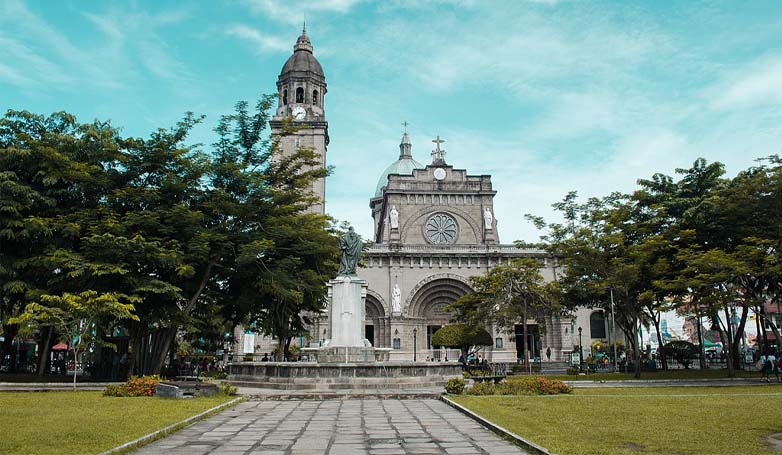
Intramuros, known as the “Walled City,” is the oldest district and historic core of Manila, Philippines. With its name derived from the Spanish word “intramuros,” meaning “within the walls,” this stone citadel was established by the Spanish conquistador Miguel López de Legazpi in the late 16th century. Designed to protect the seat of the Government of Spain in Asia, the fortress city is surrounded by thick, high walls and moats, serving as a defensive stronghold against foreign invasions and pirate attacks.
Facts
- Foundation and Construction: Intramuros was founded on June 24, 1571, and the construction of the walls began in 1590, but it was not completed until 1872 due to intermittent construction periods and damages caused by wars, earthquakes, and other natural disasters.
- Historical Significance: As the political, cultural, and religious center of the Spanish colonial government in the Philippines, Intramuros was the residence for Spanish officials and served as the nucleus from which Catholic missionaries spread Christianity throughout the Philippines and Asia.
- Architecture: The architecture within Intramuros was predominantly Spanish colonial style with influences of Filipino, Chinese, and American designs. The city once had seven gates and was adorned with several public buildings, including the Manila Cathedral, the Governor’s Palace, and Fort Santiago.
2. Experience a Unique Shopping Extravaganza at Divisoria
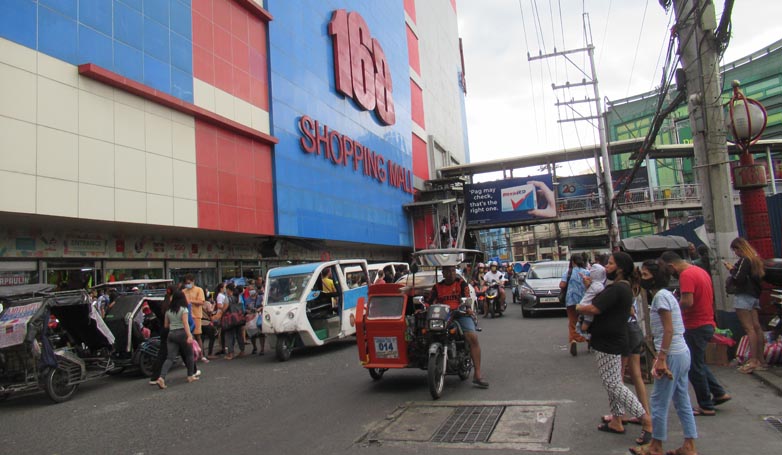
Nestled in the heart of Manila, Divisoria is an iconic commercial district known for its vibrant, chaotic, and dense market stalls. Its history dates back to the Spanish colonial period, when it was established as a place for non-Christian Chinese merchants to conduct their trade. Over the years, Divisoria has transformed into a melting pot of cultures and a symbol of the Filipino spirit of enterprise and bargain shopping.
Divisoria is often referred to as the “mother of all markets” in the Philippines. It stretches across several blocks and is bordered by notable streets like Recto Avenue, Juan Luna Street, and Claro M. Recto Avenue. Its maze of shops and stalls offers everything from fabrics and clothing to electronics, toys, household items, and fresh produce, all at wholesale prices.
Facts
- Origin: The name “Divisoria” comes from the Spanish word “dividir,” meaning to divide, because the district originally served as a divider between the Chinese merchants and the non-Christian Chinese community.
- Cultural Melting Pot: While it started as a Chinese trading hub, Divisoria has evolved into a showcase of Filipino, Chinese, and other Asian cultures, with shopkeepers and shoppers from diverse backgrounds.
- Bargain Haven: Divisoria is famous for its low prices, which attract not just individual shoppers but also business owners from all over the country who come to stock up on goods for resale.
3. Revel in the Beauty of Manila Bay’s Sunset
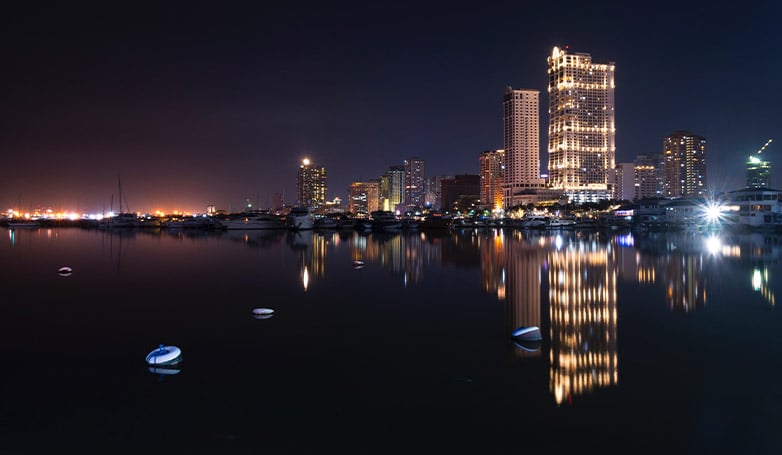
Manila Bay is a natural harbor that serves the Port of Manila (in the Philippines) on Luzon, one of the country’s largest islands. It has a rich and multifaceted history, which has shaped not only the Philippines but also the broader strategic landscape of the Asia-Pacific region.
Manila Bay is approximately 1,900 square kilometers (730 square miles) in area and is located on the western side of Luzon Island, bounded by the provinces of Bataan and Cavite. It has a roughly circular shape and is connected to the South China Sea through a narrow mouth at the headlands of Mariveles and Corregidor Island. The bay’s coastline is indented with several islands and is lined with finely divided cityscapes, including Metro Manila, and agricultural landscapes.
Facts
- Pre-Colonial Significance: The bay’s strategic location has made it a focal point for maritime trade and commerce for thousands of years. Even before colonial times, it was a central point for trade among the Malay, Chinese, Indian, and other indigenous peoples.
- Colonization by the Spanish: In 1571, the Spanish conquistador Miguel López de Legazpi claimed the area for Spain and Manila Bay became the primary naval base for the Spanish Pacific fleet. The famed walled city of Intramuros was built along the bay and served as the seat of government and military power during Spain’s colonial rule, which lasted for over 300 years.
- The Battle of Manila Bay: On May 1, 1898, during the Spanish-American War, the US Navy, led by Commodore George Dewey, defeated the Spanish Pacific squadron at the Battle of Manila Bay. This was a pivotal moment leading to the end of Spanish colonial rule in the Philippines and the subsequent American occupation.
4. Explore the National Museum of the Philippines

The National Museum of the Philippines is the premier institution that serves as the guardian of the nation’s rich historical and cultural heritage. Established on October 29, 1901, the museum originally began as the Insular Museum of Ethnology, Natural History, and Commerce under the Philippine Commission. Over the years, it has evolved to become a comprehensive museum complex that includes the National Art Gallery, the Museum of the Filipino People, and the Planetarium.
Situated in the heart of Manila, the National Museum complex houses a vast collection of artifacts, artworks, and specimens that showcase the cultural and natural history of the Philippines. The museum’s mission is to foster the appreciation, understanding, and preservation of the country’s heritage through its exhibits, research, and education programs.
Facts
- Legal Foundation: The National Museum operates under the National Museum Act of 1998 (Republic Act No. 8492), which strengthened its mandate as a cultural and educational institution.
- Collections: The museum boasts extensive collections that include anthropological, archaeological, and ethnographic objects, fine art, botanical and zoological specimens, and geological finds, among others.
- National Cultural Treasures: The museum is the repository of the Philippines’ most important cultural artifacts, including the famous Spoliarium painting by Juan Luna, the Manunggul Jar, and the San Diego Shipwreck artifacts.
5. Indulge in the Flavors of Filipino Cuisine

Chinatowns are urban enclaves that serve as cultural and commercial hubs for Chinese communities outside of Asia. These unique neighborhoods, found across the globe, are characterized by their bustling streets, Chinese architectural motifs, and an abundance of shops, restaurants, and markets selling goods ranging from traditional medicine to exotic foods. As a rich blend of the old and the new, Chinatowns are living symbols of the Chinese diaspora’s ability to preserve their heritage while integrating into diverse societies.
Facts
- The Emergence of Chinatowns: The first Chinatowns emerged in the mid-19th century, when significant numbers of Chinese immigrants arrived during the California Gold Rush and later for railroad construction. Faced with discrimination and exclusion, they formed tight-knit communities.
- The Chinese Exclusion Act of 1882: In the United States, the Chinese Exclusion Act was the first significant law restricting immigration into the United States based on a specific ethnicity. It significantly reduced the population and growth of Chinatowns in the U.S. for decades.
- Cultural Preservation: Chinatowns have been pivotal in preserving Chinese culture, language, and traditions. Many feature Chinese New Year celebrations, dragon dances, and other cultural festivities that attract visitors and maintain cultural pride within the community.
6. Stargazing at the Manila Observatory
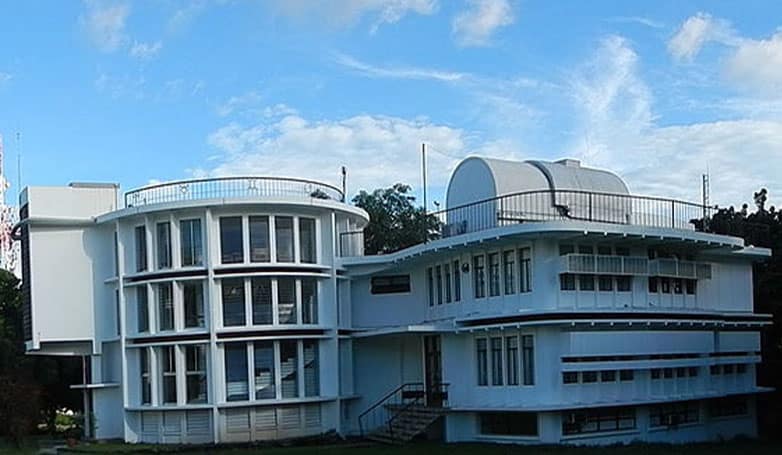
Founded in 1865 by the Jesuit priest Federico Faura, the Manila Observatory began its mission as a small observatory within the Ateneo Municipal de Manila, a Jesuit institution. Its primary purpose was to monitor Philippine weather, a crucial service for a country frequently visited by tropical storms and typhoons. The observatory was originally named the Observatorio Meteorológico del Ateneo Municipal de Manila, reflecting its initial meteorological pursuits.
Under the leadership of Father Faura and his successors, the Observatory quickly expanded in scope. It started to include astronomical observations, seismology, and geomagnetic research. The observatory made significant contributions to typhoon prediction and was instrumental in saving lives by issuing early weather warnings.
Facts
- Weather Forecasting Pioneer: The Manila Observatory was the first institution in the Philippines to systematically observe and predict typhoon activity. It became renowned for its accurate weather forecasts and it was entrusted by the Spanish colonial government with the task of issuing storm warnings.
- International Collaborations: Throughout its history, the Observatory has worked with international entities such as NASA, the Japan Meteorological Agency, and various universities, enhancing its research capabilities and providing valuable data for global scientific initiatives.
- World War II Destruction: During the Second World War, the Manila Observatory was destroyed, like many other buildings in Manila. It was hit particularly hard during the liberation of the city in 1945 due to its occupation by the Japanese military, which used its facilities for their own meteorological studies.
7. Immerse in Nature at Rizal Park

Rizal Park, also known as Luneta Park, is a historical urban park located in the heart of Manila, Philippines. Its significance is anchored in its association with Dr. José Rizal, the country’s national hero, who was executed by firing squad at this site on December 30, 1896. The park’s earlier name, Luneta, is derived from the Spanish word “lunette,” referring to the crescent-shaped outworks of a fort that the area resembled during the Spanish colonial period.
The execution of Rizal helped to galvanize the Filipino people to seek independence from Spanish rule, leading to the Philippine Revolution. As such, the park is not only a place of leisure but also a symbol of Filipino bravery, patriotism, and the ultimate sacrifice for freedom.
At the park’s center stands the Rizal Monument, which contains the hero’s remains and is guarded by ceremonial sentinels known as the Kabalyeros de Rizal. The monument itself is an obelisk set on a stone base, designed by Swiss sculptor Richard Kissling and titled “Motto Stella” (Guiding Star). It was unveiled on December 30, 1913, and has since become both a focal point for national commemorative events and a landmark of the city of Manila.
Facts
- Size and Location: Rizal Park spans about 60 hectares of open lawns, ornamental gardens, paved walks, and wooded areas. It is situated on Roxas Boulevard, adjacent to the historic walled city of Intramuros.
- Rizal Monument: The steel pylon holding Rizal’s remains stands at approximately 12.7 meters tall and is topped with a sculpture representing Rizal’s last moments.
- Independence Flagpole: At 46 meters (150 feet), the Independence Flagpole is considered one of the tallest flagpoles in the country and marks the spot where the Philippine flag was first hoisted on July 4, 1946, symbolizing the nation’s independence from the United States.
8. Discover the Enchanting Manila Cathedral
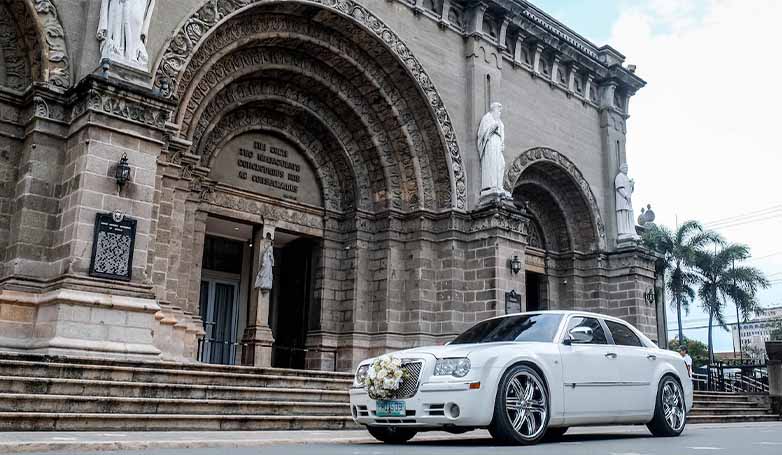
Manila Cathedral, formally known as the Minor Basilica and Metropolitan Cathedral of the Immaculate Conception, stands as a powerful symbol of the Roman Catholic faith in the Philippines. The cathedral is situated in the historic walled city of Intramuros in Manila, the country’s capital. Its origins date back to the Spanish colonial period, reflecting the country’s long-standing Catholic heritage.
The original structure was a simple parish church, built from nipa and bamboo in 1571 under the orders of Miguel López de Legazpi, a Spanish conquistador and founder of Manila. Since then, the cathedral has undergone multiple incarnations, having been rebuilt numerous times due to the damage of war, earthquakes, and fires that are part of its tumultuous history.
Manila Cathedral is not only a religious center but also an architectural marvel that has witnessed and played a role in significant historical events. It has been a venue for papal visits, consecrations, and the funerals of prominent Filipino clergy and laypeople.
Facts
- Reconstructions: The present structure of Manila Cathedral is actually the eighth version, with the seventh version being completely destroyed during the Battle of Manila in 1945. The current cathedral was reconstructed and consecrated on December 8, 1958.
- Papal Blessing: The cathedral has been visited by several popes throughout its history, including Pope Paul VI, Pope John Paul II (who visited twice), and Pope Francis. On all occasions, the popes gave their apostolic blessings.
- Architectural Design: The cathedral’s architecture is a blend of Neo-Romanesque and Neo-Byzantine styles, notable in its facade, which features statues of famous saints and a remarkable rose window. Inside are beautiful stained glass windows, sculptures, and a grand altar.
9. Party the Night Away in Poblacion
Poblacion, once a sleepy residential area in the heart of Makati, Metro Manila, Philippines, has undergone a dramatic transformation and is now recognized as one of the most vibrant and culturally rich nightlife destinations in the city. This bustling neighborhood exudes an electric charm that comes alive as the sun sets, revealing a fascinating world of entertainment, dining, and social experiences.
Poblacion historically served as the old downtown of Makati before the business district shifted to its current location around Ayala Avenue. The area is steeped in history, home to various landmarks such as the centuries-old St. Peter and Paul Church and the Museo ng Makati, which showcases the city’s heritage. As the commercial center moved, Poblacion became less of a focal point until recent years when it started to thrive again by repurposing old structures into new, hip establishments that attract a diverse crowd.
Facts
- Culinary Hotspot: Poblacion is famed for its wide array of dining options. From street food to gourmet eateries, the area flaunts a mix of local Filipino cuisine and international flavors. Foodies revel in the gastronomic adventure found in its numerous restaurants, pop-up eateries, and food parks.
- Thriving Bar Scene: It’s noted for unique bars and pubs, each with its own concept and ambiance. From rooftop lounges with stunning skyline views to speakeasy-style hidden bars, Poblacion offers a multitude of drinking establishments that cater to different tastes and moods.
- Art and Culture: The district has become a canvas for local artists, with street art and murals decorating its walls, adding a bohemian vibe to the neighborhood. Art galleries and creative spaces also contribute to Poblacion’s growing reputation as a cultural hub.
10. Enjoy a Day at the SM Mall of Asia
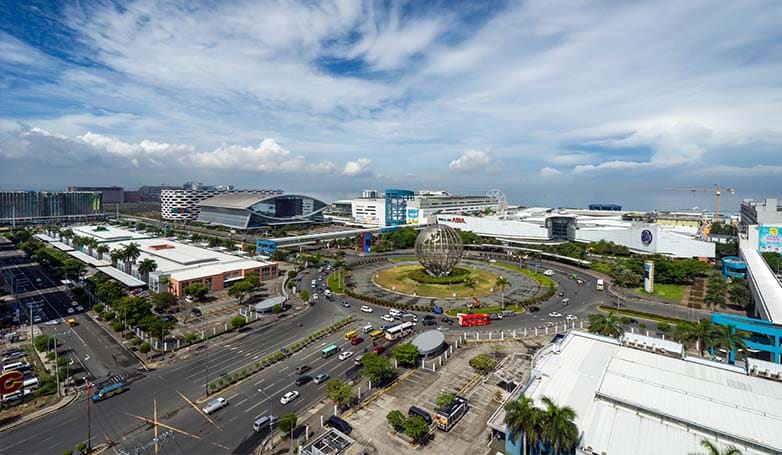
The SM Mall of Asia, often abbreviated as SM MOA, is a vast shopping mall located in Bay City, Pasay, Philippines. It is one of the largest malls in the Philippines and is operated by SM Prime Holdings, the largest mall developer and operator in the country. The mall opened its doors to the public on May 21, 2006, and was inaugurated by then-President Gloria Macapagal-Arroyo.
The concept behind SM Mall of Asia was to create a state-of-the-art commercial facility that would offer a wide array of shopping, dining, and entertainment experiences in one location. It was envisioned by Filipino-Chinese business magnate Henry Sy Sr., who aimed to create not just a mall but a destination that would put the Philippines on the map of international retail and tourism.
Designed by Arquitectonica, an international architecture, interior design, and planning corporation, the SM MOA’s architectural design combines contemporary style with traditional Philippine elements, blending seamlessly with the seaside location to provide a unique and appealing aesthetic.
Facts
- Size and Structure: Spanning approximately 42 hectares, the SM Mall of Asia complex is a sprawling development that includes multiple buildings interconnected via walkways. At the time of its opening, it was the third-largest mall in the world.
- Main Features: The Mall of Asia consists of four buildings: the Main Mall, the Entertainment Mall, and the North and South Carpark buildings. It boasts a variety of shops, a supermarket, numerous restaurants, and the SM Department Store and SM Hypermarket. The mall also features an IMAX theater—one of the first in the country—a 20-seater tram to transport shoppers around the property, and an Olympic-sized ice skating rink.
- The MOA Eye: One of the notable attractions is the MOA Eye, a Ferris wheel that stands at 55 meters and provides a panoramic view of the surrounding cityscape and Manila Bay.
Say Paalam (Goodbye) But Not Forever, Manila!
That wraps up our list of the top 10 things to do in Manila, Philippines. Whether you’re a culture vulture, a history buff, a foodie, or just an intrepid traveler, there’s no shortage of excitement and new discoveries waiting for you in Manila. So, pack your bags, buckle up, and prepare to dive headfirst into the Manila madness, because the buzzing city of Manila is sure to steal your heart and keep you coming back for more!
Manila, Philippines FAQ
Here are the most common questions about Manila, Philippines.
1. What is the best time to visit Manila?
The best time to visit Manila is between December and February, when the weather is cooler and drier. However, this is also peak tourist season.
2. Is it safe for tourists in Manila?
Like any other big city, Manila has areas that are less safe than others. However, most tourists who take standard precautions have a trouble-free visit.
3. How can I get around Manila?
Common modes of transportation include the light rail transit system, taxis, jeepneys, tricycles, and pedicabs. Ride-hailing apps like Grab are widely used as well.
4. Do I need a visa to visit Manila?
It depends on your nationality. Many countries have visa-free agreements with the Philippines for short stays, but others will require a visa. It’s best to check with your local Filipino embassy.
5. Is it expensive in Manila?
Compared to many Western countries, Manila can be relatively inexpensive. However, prices in areas popular with tourists can be higher.












